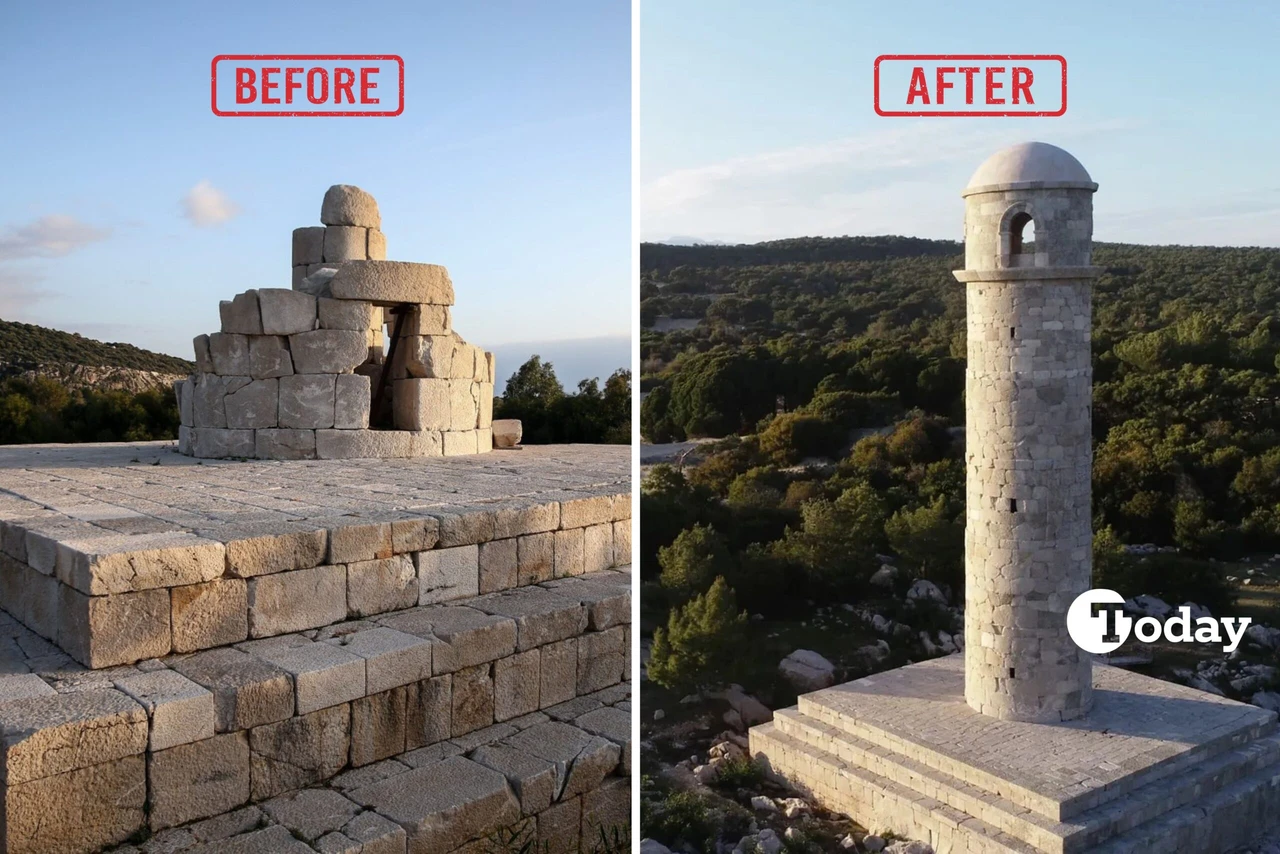2,000-year-old theatre mask, monumental gate unearthed in Türkiye’s Aizanoi
 In an archaeological excavation in the Cavdarhisar district of Kutahya, a monumental gate structure leading to the ancient city of Aizanoi and a 2,000-year-old terracotta theatre mask were discovered, Türkiye, November 6, 2024. (AA Photo)
In an archaeological excavation in the Cavdarhisar district of Kutahya, a monumental gate structure leading to the ancient city of Aizanoi and a 2,000-year-old terracotta theatre mask were discovered, Türkiye, November 6, 2024. (AA Photo)
During ongoing excavations in the Cavdarhisar district of Türkiye’s Kutahya, archaeologists have uncovered significant artifacts in the ancient city of Aizanoi, including a monumental gate structure and a 2,000-year-old terracotta theatre mask.
The city, known for housing one of the best-preserved Zeus Temples in Anatolia, is a UNESCO World Heritage site on the Temporary List, included in 2012.
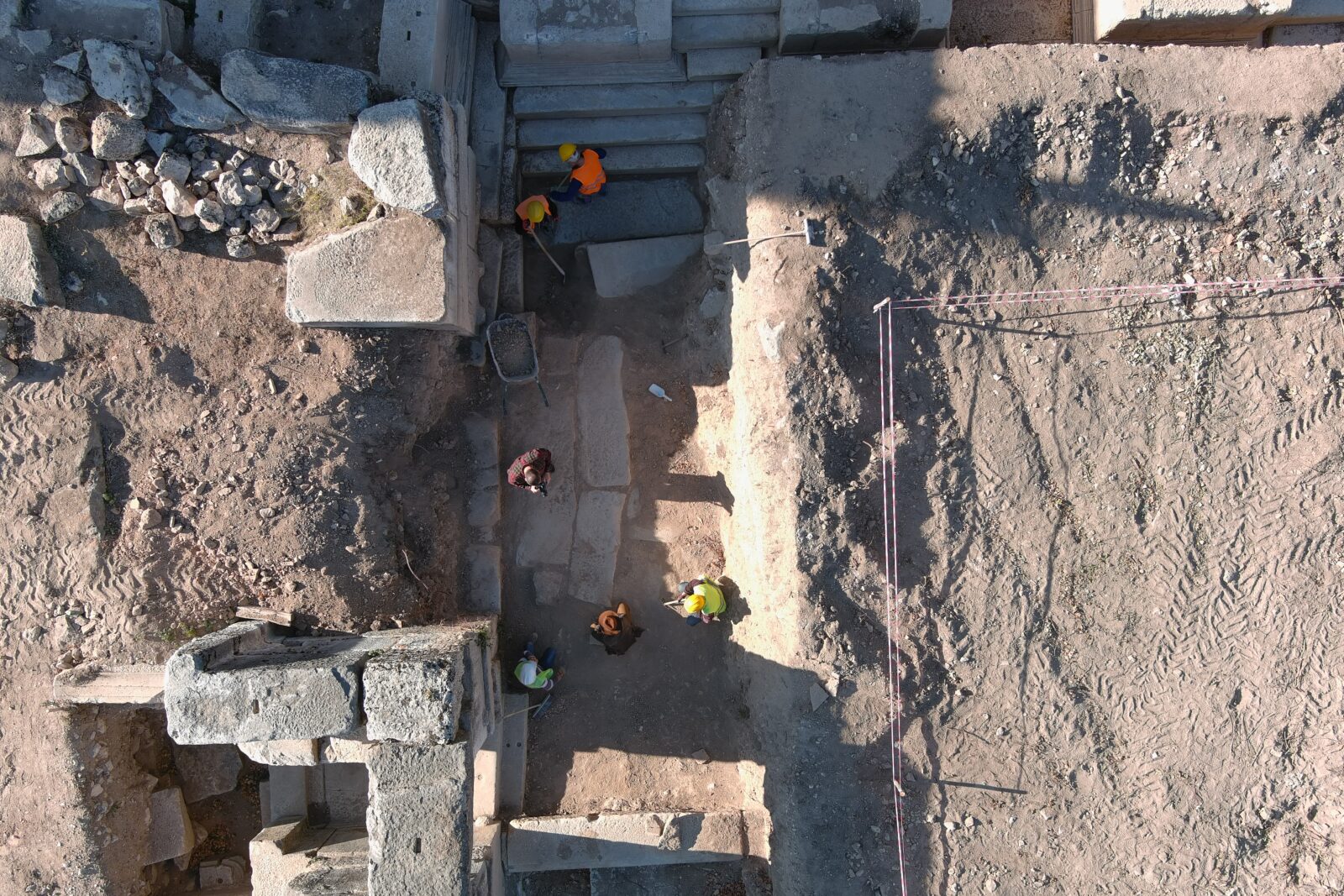
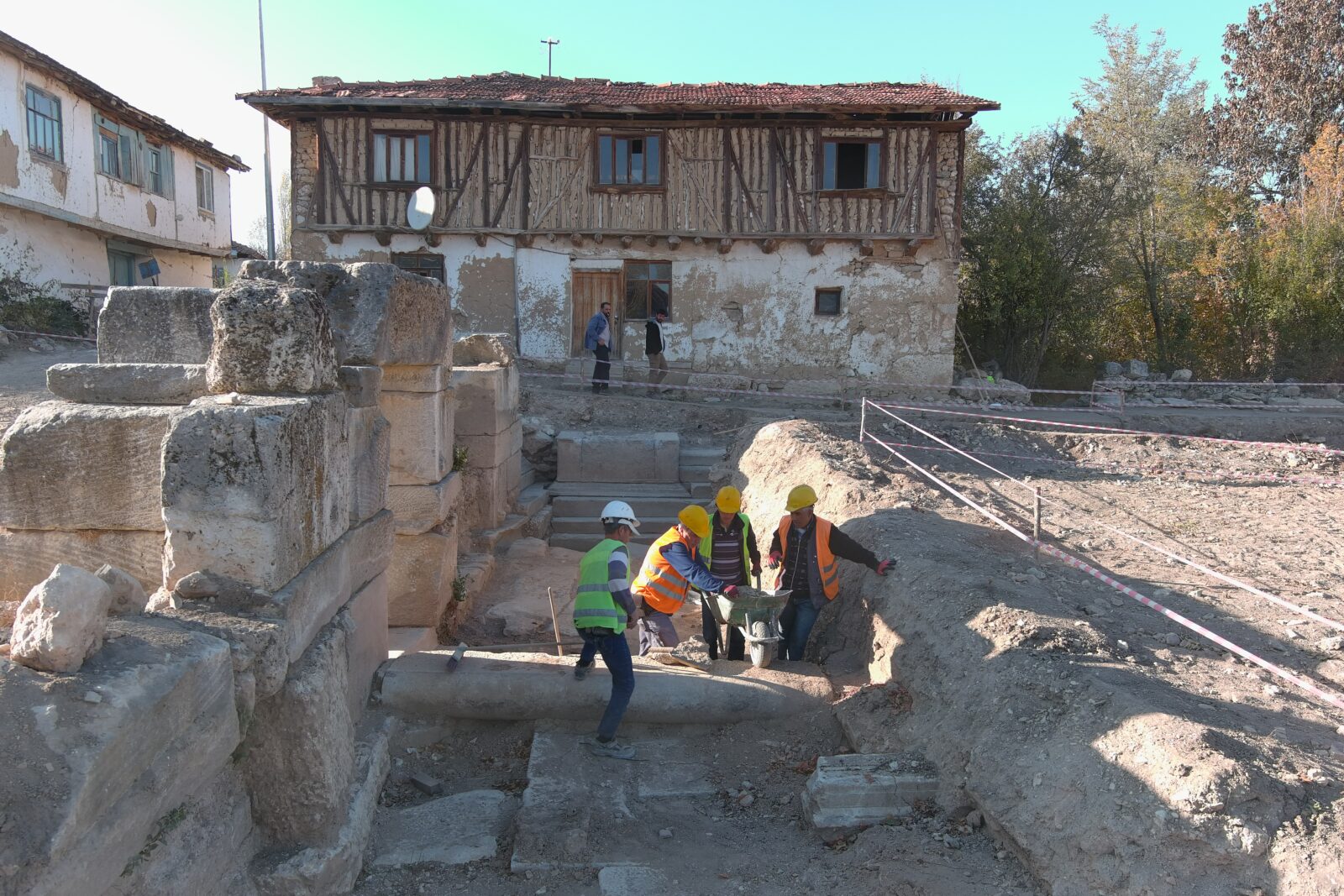
Unveiling ancient history: The monumental gate
Excavation efforts, supported by the Ministry of Culture and Tourism‘s General Directorate of Cultural Heritage and Museums, along with Kutahya Provincial Administration, have focused on various areas within the site. The excavation is being led by Professor Gokhan Coskun, the Chair of the Department of Archaeology at Kutahya Dumlupinar University (DPU), with the participation of university scholars, technical personnel and workers.
In addition to the discovery of the monumental gate, Coskun reported that excavation work has primarily focused on the agora (marketplace) and stadium structures this season, with a significant portion of the eastern tribune of the stadium already being uncovered.
“The area where the stadium’s seating collapsed during an earthquake is being revealed, and we have started transporting previously categorized stone blocks to a different area for further study. In the upcoming years, our goal is to fully uncover the stadium’s tribune,” explained Coskun.
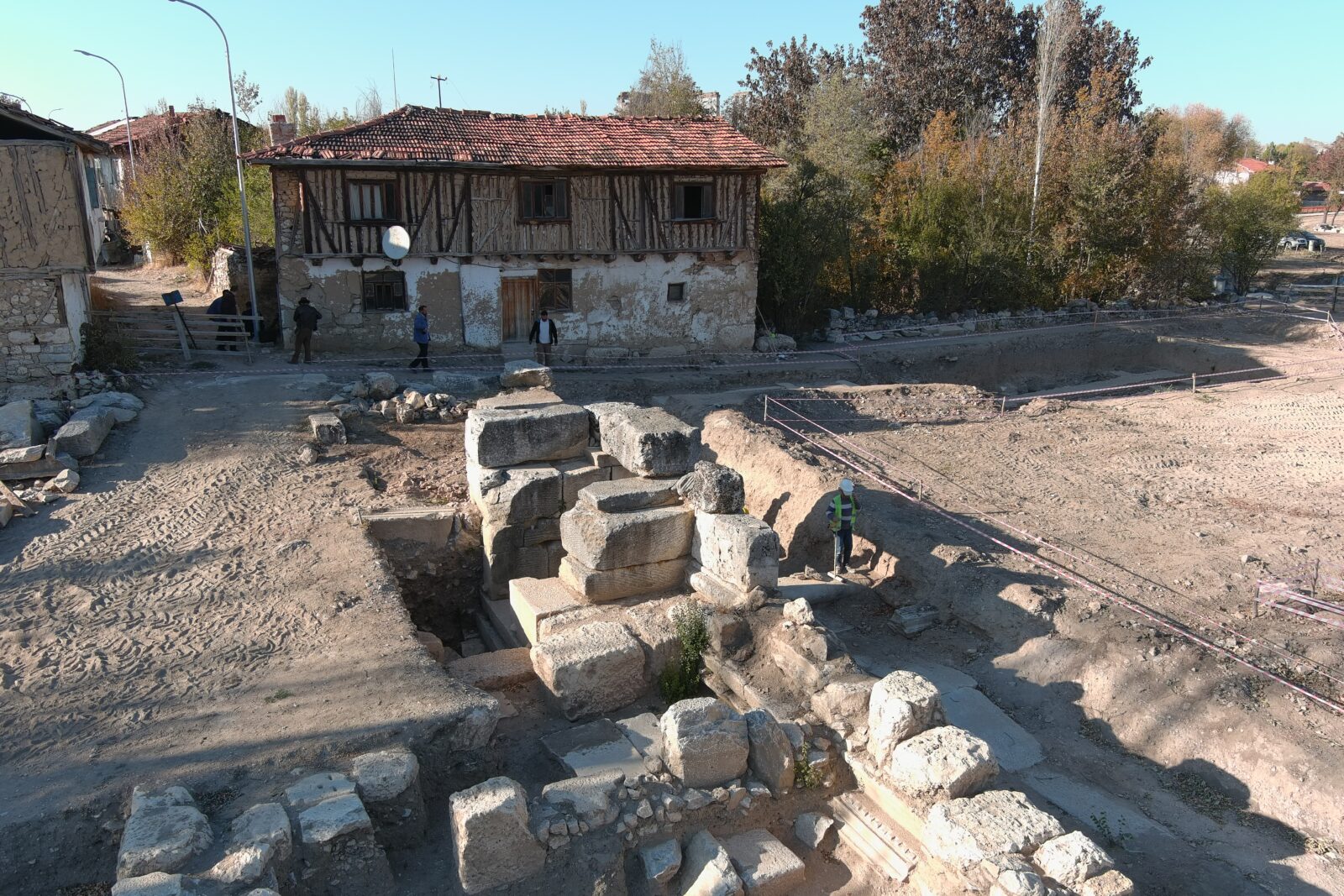
Aizanoi’s thriving agora, discovery of ancient retail spaces
The team has also made notable progress in the Agora area, unearthing three additional shops.
Coskun mentioned the successful completion of excavations in the southern section of the west portico, where remarkably well-preserved marble flooring, column remains and marble steps leading from the courtyard to the portico have been brought to light. This area is now attracting the interest of visitors.
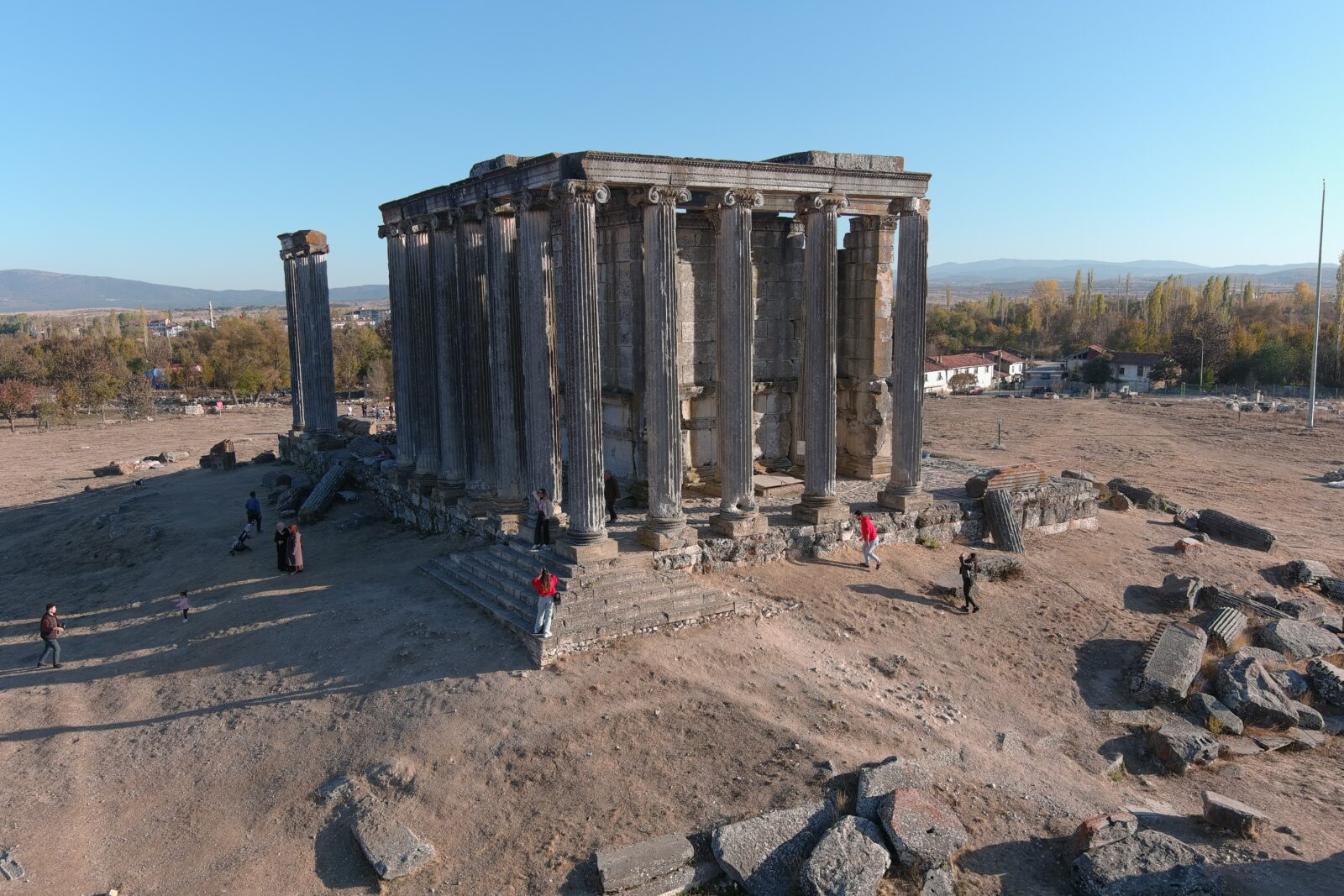
Unraveling monumental gate structure
In the southern section of the agora, excavations have led to the identification of a late antique building that once served as a gateway to the city center. “We were surprised to find a two-story structure during our work, with parts of the first floor still intact. We believe this building, dating back to the late 2nd century A.D., could have been a monumental gate,” said Coskun.
The building’s facade features architectural elements typical of structures known as “aedicula,” commonly found in public buildings such as theatres, monumental fountains, libraries and monumental gates. Despite encountering some collapsed upper structure components, archaeologists uncovered four podiums, adorned with intricate vegetal designs, that provide insight into the building’s grandeur.
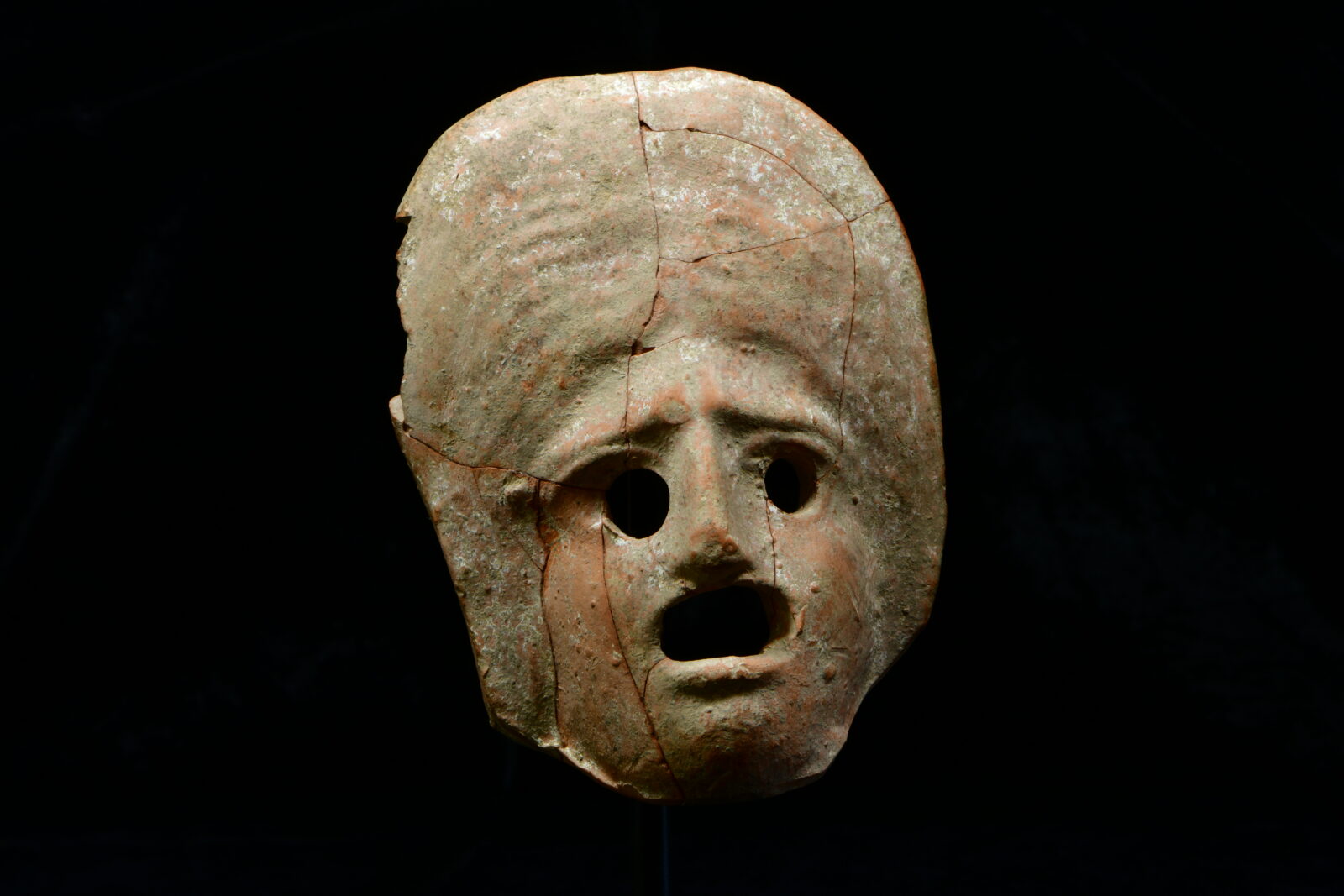
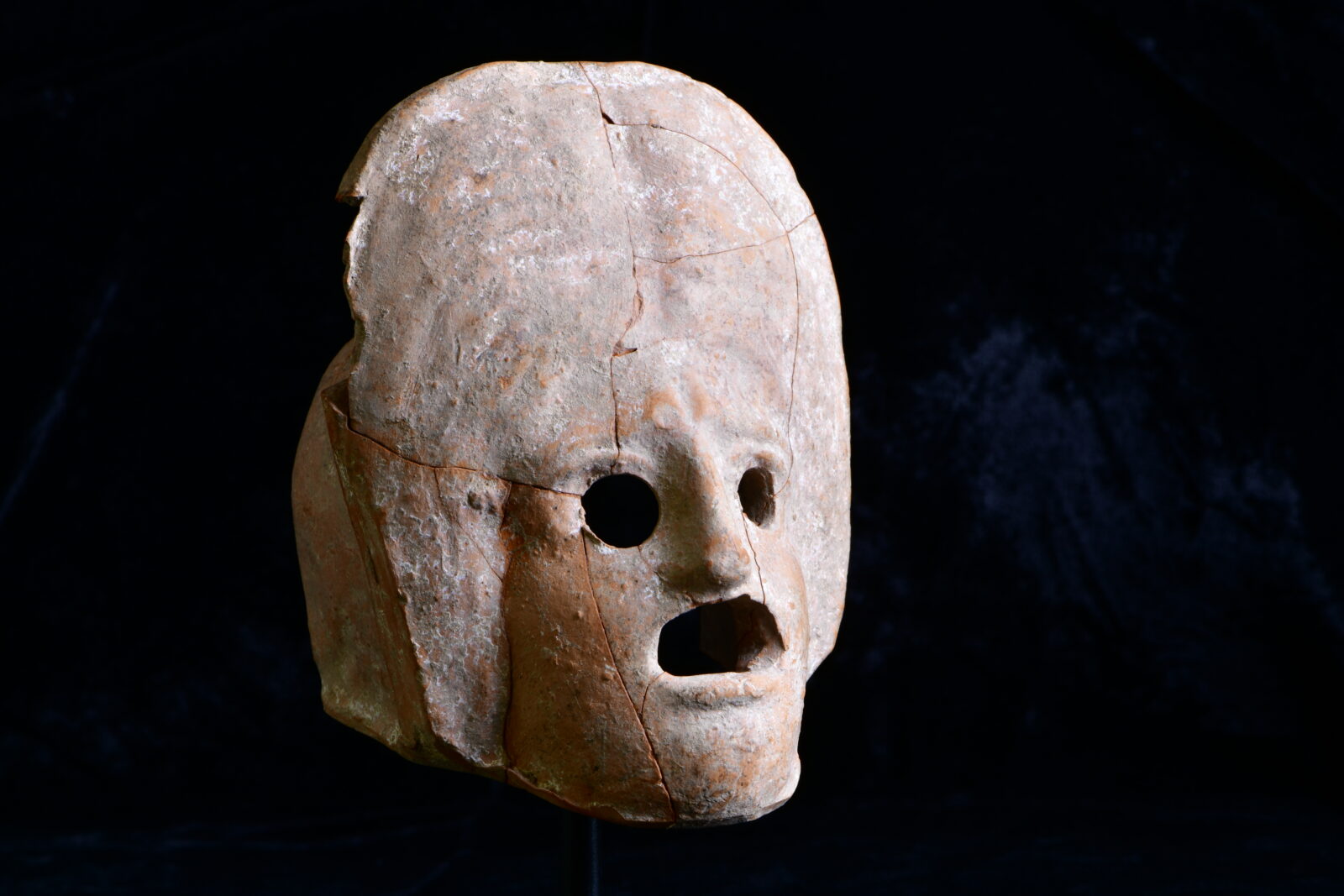
Theatre mask: Glimpse into Dionysian culture
In another remarkable discovery, the team uncovered a well-preserved terracotta theatre mask inside one of the podiums, offering new insights into the Dionysian cult of Aizanoi.
“This find is significant, as it contributes valuable new data about Aizanoi’s association with the Dionysian cult, a central aspect of the city’s religious life,” Coskun remarked.
Earlier discoveries of similar masks, found in graves near the theatre, suggest that such items were used as funerary offerings. Coskun predicts that more such artifacts will be discovered as the excavation progresses, further shedding light on the cultural and religious practices of ancient Aizanoi.
As the team continues their work, they anticipate further findings in both the agora and stadium areas, as well as more details about the monumental gate’s architectural and functional role.
With each discovery, Aizanoi’s fascinating ancient history comes more into focus, providing invaluable contributions to understanding the complex cultural heritage of this ancient city.
